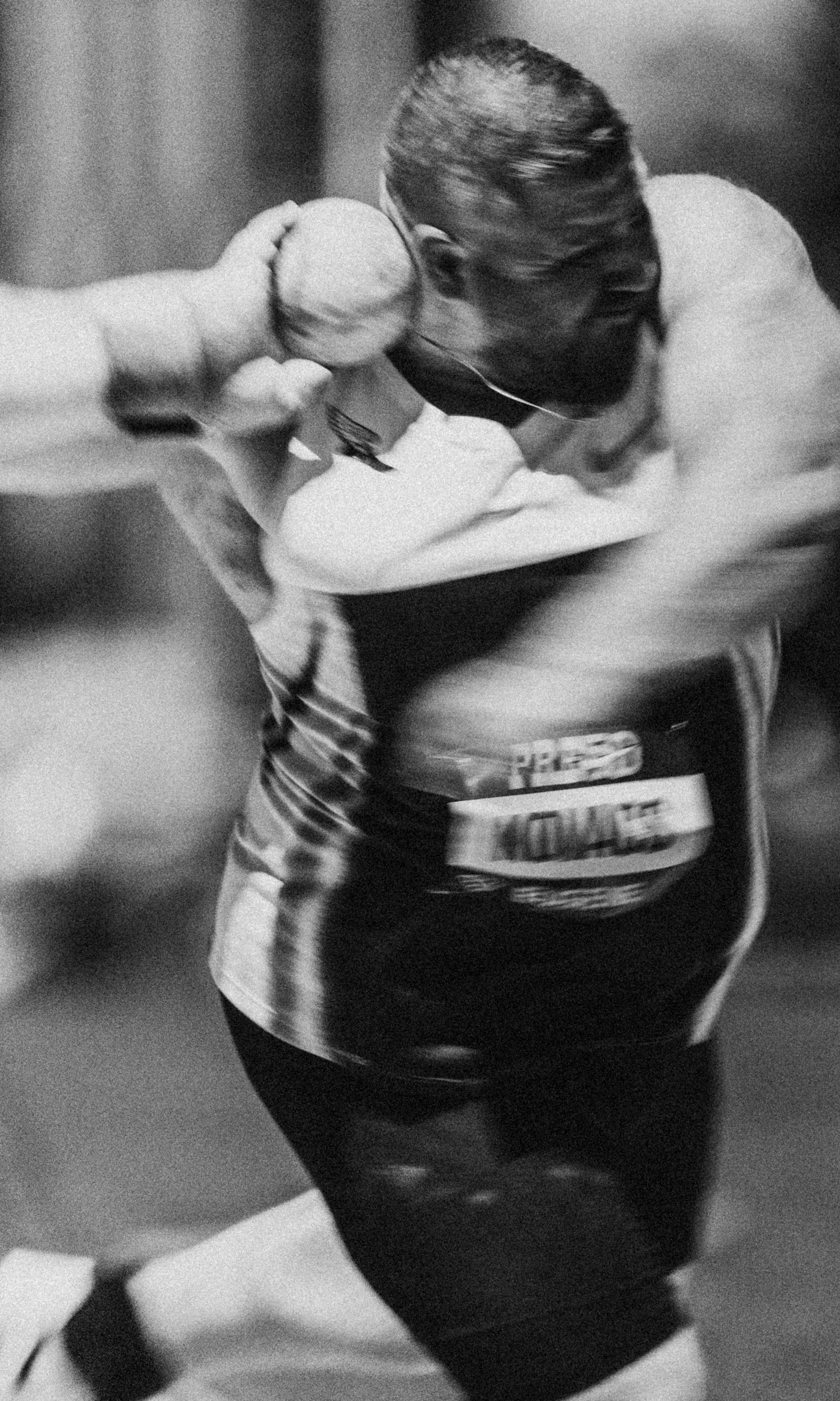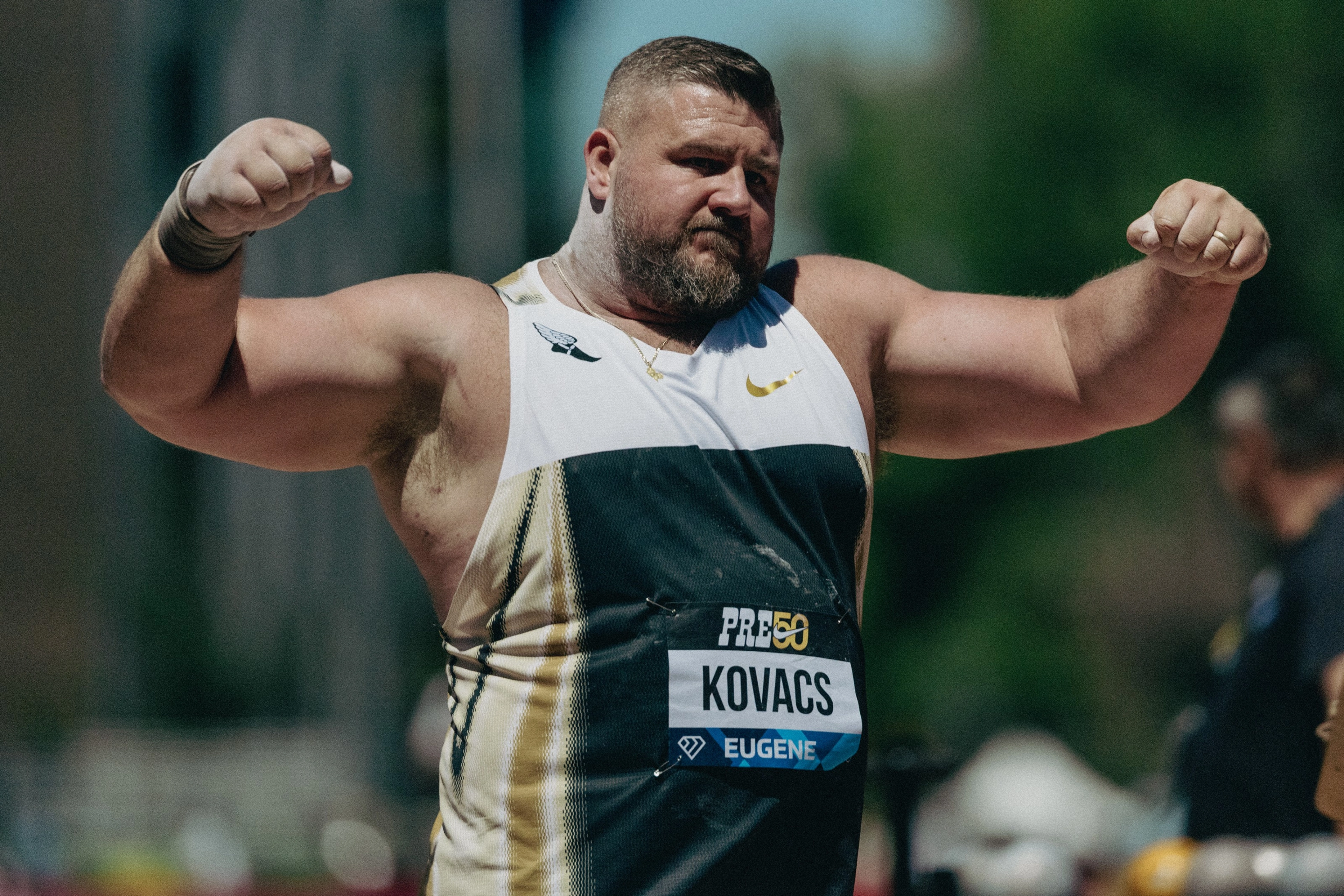
On a late July afternoon, while his three-year-old twins were napping, American shotputter Joe Kovacs went to the basement of his home in Dublin, Ohio. He was bored, so he figured he’d get in some light training. He loaded 540 pounds on his barbell and benched it for a breezy double, no music, with the U.S. Open playing on his television in the background.
You could easily assume that this casual power is what makes Kovacs so accomplished in the shotput. He’s won the world championships twice, he was the Olympic silver medalist in 2016, and his outdoor PB of 23.23 m (76 ft 2 1/2 in) is the second farthest throw of all time. But a shotputter has ideal biomechanical proportions, and at a height of 6 feet, Kovac’s strength is a requirement to stay at the top of his event.
“I need to stay strong and powerful, because the shorter you are, the less you can use your body’s levers to your advantage,” says Kovacs. “Some guys in the Diamond League roster are 5, 6 inches taller than I am. They can generate velocity through their levers in ways that I can’t.” Plus, all that brute strength is simply the end note to the most important facet of his technique. “Velocity is what makes the difference in a big throw — strength plus speed. That combination starts with your footwork,” he says.
Here, Kovacs calls out the essential elements for a winning throw. Look for them when he steps into the shotput ring this weekend in Silesia.
The Shoes
A shotputter’s real estate is small: a circle just seven feet in diameter. Feel is everything in a performance zone this tight. That’s why footwear is an uncompromising part of a thrower’s toolkit.
Kovacs, along with many other pro shotputters, opt for the Nike Zoom SD. The no-sew upper conforms to the foot, the Flywire cables help keep his center of gravity over the footbed as he’s generating immense force on the spin, and the textured outsole offers him more ground feel as he’s traveling across the circle. This season, Kovacs has been testing a new version of the SD currently under development, which includes a carbon fiber plate. He laced them up out of the box during this year’s Pre Classic in July, took his practice throws, and promptly delivered one of the best throws in the world this year, a 22.48 meter heave.
“It gives that diving board affect, but because it’s so thin, I can still feel all the textures of the circle,” he says. “Shotputters are ultimately trying to sprint from one end of the circle to the other. If your feet aren’t locked into the ground, you leak the energy you could be channeling into your throw.”

To say that Joe Kovacs has the muscle for the shotput is an understatement.
The Spin
The first bit of wisdom Kovacs received as a young thrower came from American shotputter Reese Hoffa, another Olympic medalist and former world champion, during a high school camp in Pennsylvania. Don’t do the glide, said Hoffa — a technique where the thrower moves linearly across the circle, without rotating. He told Kovacs he could generate more velocity by trying the spin instead, an unusual recommendation for a young thrower. Out of principle, almost all high school throwers learn the glide first, as it doesn’t require the coordination of the spin.
The result: Kovacs creates an insane level of speed as he exits the spin and launches the shotput off his neck. He suggests fans to look for speed across the circle as the separating variable between a good throw and a great throw, no matter how massive an athlete looks.
“I always remind people that the shot is a speed event. We’re trying to get from one end of the circle to the other is the shortest time possible."
Joe Kovacs, American shotputter and Nike athlete
The Signals
One of the best parts about track and field, Kovacs says, is the unbiased measurement of an athlete’s performance. It’s the stopwatch and the measuring tape that determine the winner. That said, there are subtler cues that can tip a viewer off to whether a throw has something special. Listen for the sounds of a thrower’s ground contact across the circle, their shoes scraping the surface. More ground contact usually means a good throw. (Notice a theme? It all goes back to footwork).
Another cue to watch: the level of spin on the shotput as it soars through the air. If it’s spinning, it means the thrower didn’t get all of their force behind it. Kovacs uses a cueball in pool as an example. A weaker shot is one that’s wobbling and spinning after contact with the pool cue. Sometimes, in practice, Kovacs will write his name on the shotput in permanent marker so that the spin is legible to him and his team.
“My whole career has been one big experiment in combining all these elements of a throw. It becomes this puzzle, or a game, something you’re always trying to perfect. What if I try this? What if I change this? Those decisions involve all these different facets, from strength, to timing, to technique. For me, that experimenting will never stop being fun.”